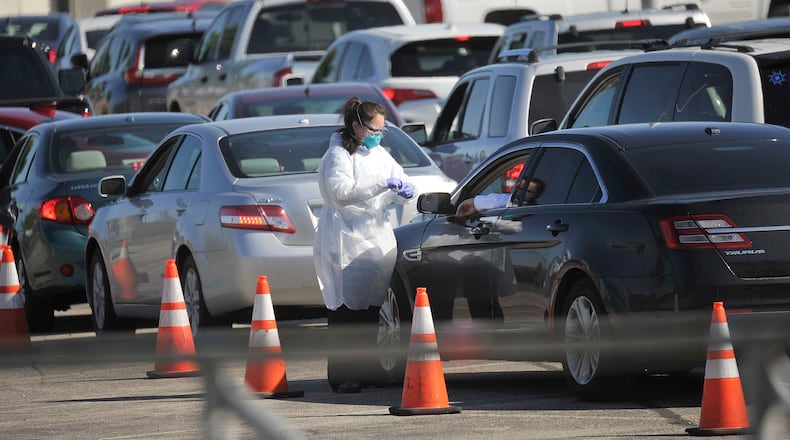Ohio Department of Health Director Dr. Amy Acton said Ohio has been testing about 41 people for every 100,000 Ohio residents and the goal is to boost it to 150 tests per 100,000 people.
RELATED: Coronavirus: Complete Coverage
Manufacturing, distribution, construction and general offices were allowed to reopen Monday while retailers can reopen May 12. The governor promised more information in the next few days on when restaurants, hair salons and other businesses may be allowed to restart. Also, Bureau of Motor Vehicle offices are expected to open in late May with online check-in systems to reduce lines.
The Ohio Department of Health reported 19,609 confirmed cases, plus 865 probable cases; 3,809 hospitalizations; 975 deaths, plus 81 deaths attributed to probable cases.
Testing for the coronavirus, which requires a doctor’s order, will be prioritized. The top priority remains people with symptoms who are hospitalized or are heath care workers; second tier is symptomatic people who live in congregate settings such as nursing homes or shelters, are 65 and older, have underlying conditions, or work as first responders or in critical infrastructure. Staff who work in outbreak hotspots also fall into the second tier.
The third testing tier includes Ohioans with or without symptoms who are undergoing surgeries or procedures.
RELATED: Should Ohio require childhood vaccinations?
As Ohio businesses gradually reopen, many workers face a grim choice: their health or their paycheck. Employees with underlying health conditions that put them at high risk for COVID19 complications are worried about their safety in the workplace.
“As we go through this, we know that people will be differently situated,” said Lt. Gov. Jon Husted. “You may be older, you may have children you don’t have child care for, you may have a number of issues. We have encouraged employers to work with their employees during this transition period.”
Husted said workers are required to return to work if called back, though health conditions could be a mitigating factor. “It’s not a hard and fast rule but if your job is offered to you, you’re supposed to go back to work. There is a list of exemptions for that,” he said.
More than 1 million Ohioans have filed for unemployment benefits over the past six weeks.
State lawmakers are scheduled to return to Columbus this week. By June 30, lawmakers and DeWine will have to agree on a budget correction bill to addresses the dramatic fall off in sales and income taxes that fuel state government.
About the Author

